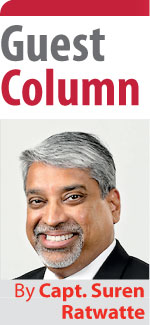Monday Apr 21, 2025
Monday Apr 21, 2025
Monday, 29 November 2021 00:43 - - {{hitsCtrl.values.hits}}

The challenge has always been how to make enough profit in this narrow window to tide over the remaining 30-something weeks during which loads are poor and airlines are almost guaranteed to lose money
 The airline business is slowly emerging from the nightmare caused by COVID-19. The Dubai Airshow, one of the industry’s signature events, which took place in November, was the first of its kind held for two years.
The airline business is slowly emerging from the nightmare caused by COVID-19. The Dubai Airshow, one of the industry’s signature events, which took place in November, was the first of its kind held for two years.
The show led to a spurt of orders, primarily for narrow-body aircraft also known as single-aisle jets. Airbus had the major share of the 400-plus orders announced, a total which included the first for the A350 freighter. Boeing has long dominated the freighter market, first with its 747 and later the twin-engine 777F, which forms the backbone of what has been the only profitable niche during the pandemic. Airbus is determined to regain the market share it ceded in this segment, and the A350F is the design they hope will do that.
Boeing did not walk away empty-handed though, announcing orders for 101 aircraft. This included a substantial commitment for the Boeing 737 MAX from Indian start-up Akasa Air based in India’s tech-capital Bangalore (Bengaluru).
Other than the A350 order, most of the Dubai show’s sales were for single-aisle airliners, with prices of new aircraft recovering to almost pre-pandemic levels. However, the larger twin-aisle jets are still in the doldrums with no substantial orders forthcoming. The discount on older single-aisle jets is now within 20% of 2019 values, representing a strong recovery from a year ago, but twin-aisle types are selling for less than 50% of their earlier prices.
Holiday fever
Soon after the Dubai Airshow came the most important travel period of the year for US airlines: Thanksgiving weekend. A little-known secret of the airline industry is that leisure traffic is seasonal. Traditionally, the peak summer period (July and August), the Easter and Christmas breaks, plus Thanksgiving, were the only reliably profitable weeks of the year in the USA. With more economic growth in other parts of the world, this narrow window of profitability has grown somewhat.
The Chinese Lunar New Year and Golden Week (in autumn) have been busy times pre-COVID. Add to this the Hajj pilgrimage, Eid festival and a few other holiday periods – in total there are only around 22 weeks of the year when leisure-centric airlines can expect profitability. The challenge has always been how to make enough profit in this narrow window to tide over the remaining 30-something weeks during which loads are poor and airlines are almost guaranteed to lose money.
Slaves to the oil price
Another factor that makes life difficult for airline managers is the unpredictability of the price of aviation fuel. Currently, oil is trading at around $ 72 a barrel, down slightly from a high of $ 85 only a few weeks ago. At the height of the pandemic, oil prices briefly fell to almost zero as storage facilities ran out of space, but suppliers have drastically cut output since then, resulting in a price surge just as airline traffic appears to be recovering.
To further complicate matters, some airlines face a monopoly fuel supplier at certain airports, such as Ceylon Petroleum Corporation (CPC) in Sri Lanka. For many years CPC has charged a premium of $ 0.30 per US gallon of aviation fuel sold in the country. One ton of jet fuel is equivalent to approximately 29 gallons, and a long-haul flight from Colombo to London or Melbourne will consume about 60-70 tons. That means a premium of around 2,000 gallons, or around $ 600 extra, in fuel costs alone for Sri Lanka’s national carrier, compared to what competitor airlines will pay.
In a peculiar move, CPC abruptly lowered the premium to $ 0.10 a gallon in early 2019, resulting in even greater losses to the fuel supplier while making it cheaper to fly out of Colombo. Such are the vagaries of Government-owned ‘business’ undertakings.
COVID surging again?
As this column goes to press, reports of a new ‘variant of concern’ are emerging from Africa. The dangerously virulent new mutation was first identified in South Africa but has since spread to Hong Kong, Israel and Belgium. More than a dozen countries have announced the suspension of air services to South Africa in the light of this information. It can only be hoped that this outbreak is contained and does not result in a situation similar to that caused by the so-called Delta variant earlier this year.